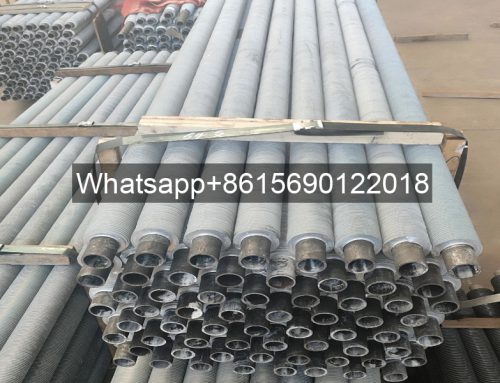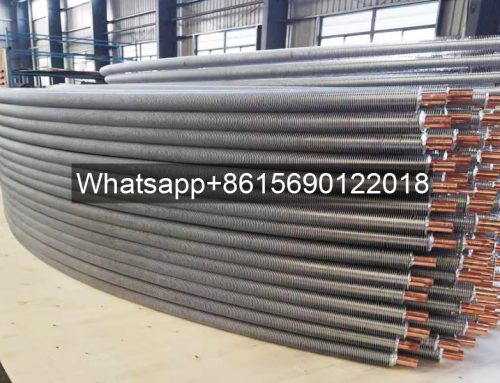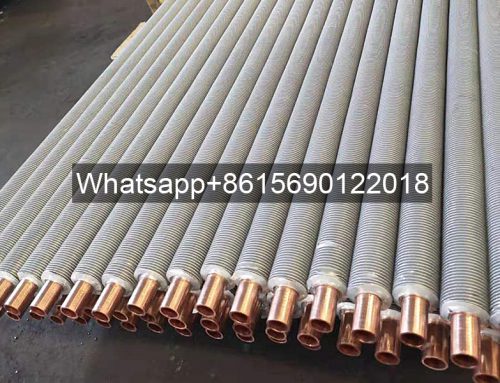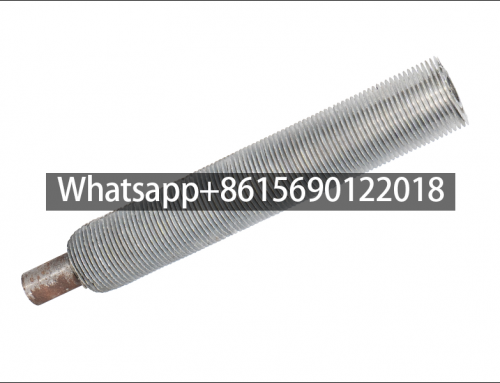Project Description

- Product Name: Extruded Fin Tube Manufacturer | Extruded Aluminum Fins | Extruded Fin
- Leave Your Message
Extruded fin tube manufacturer – Datang, providing professional extruded aluminum fin tubes and extruded copper fin tubes. The factory has 20 years of experience in fin tube production. Each fin tube is pressure tested and qualified before leaving the factory.
Extruded fin tube is a high-efficiency heat exchange element with fins formed on the surface of the base tube through mechanical extrusion process. It has the characteristics of high heat transfer efficiency, corrosion resistance, and wear resistance. It is widely used in industrial refrigeration, power, petrochemical and other fields.
Extruded fin tube structure and manufacturing
The mechanical extrusion process is used to process heat-conducting materials such as aluminum and copper into spiral or straight fins, which are tightly attached to the outer wall of the base tube (such as steel tube, copper tube) to form an integrated heat transfer structure. During the manufacturing process, parameters such as extrusion force and temperature must be precisely controlled to ensure the fin size accuracy and surface quality.
Extruded finned tubes are manufactured in various materials and specifications to suit industrial heat exchange applications, with common options summarized in the table below. Specifications are derived from standard production practices and can be customized based on project requirements.
| Category | Materials | Specifications | Remarks |
|---|---|---|---|
| Base Tube | Carbon steel (e.g., 10#, 20#) | OD: 25.4–114.3 mm Wall thickness: 2.25–9.53 mm |
Standard for general industrial applications |
| Stainless steel (e.g., 304, 316L, 2205) | OD: 8–51 mm Wall thickness: ≥1.2 mm |
Ideal for corrosive environments | |
| Copper (e.g., T2) | OD: 8–51 mm | High thermal conductivity for HVAC&R systems | |
| Alloy steel / Duplex steel | OD: Customizable (e.g., 50.8 mm for 2-inch tubes) | Suitable for high-pressure or extreme conditions | |
| Fin Material | Aluminum (e.g., 1060, 1100) | Thickness: 0.2–0.4 mm Height: 5–25.4 mm |
Lightweight and cost-effective; common for thermal efficiency |
| Copper (e.g., T2) | Thickness: 0.76–3.18 mm Height: 12.7–25.4 mm |
Enhanced heat transfer in critical systems | |
| Steel | Thickness: 0.76–3.18 mm | Used for high-strength requirements | |
| General Parameters | – Fin pitch / Fins per meter: 40–277 (adjustable for dust-prone or high-efficiency scenarios) – Tube length: ≤18 m – Operating pressure: Up to 6 MPa |
||
Application scenarios of extruded finned tubes
Industrial refrigeration: cold storage evaporators, condensers and other equipment use fins to increase the heat exchange area to achieve efficient refrigeration.
Power engineering: boiler water-cooled walls, heat exchangers, etc., to improve heat exchange efficiency and withstand high temperature and high pressure environments.
Chemical industry: heating furnaces, heat exchangers and other equipment to adapt to corrosive fluid environments.
Other fields: wood drying equipment, food processing drying systems and other industrial scenarios.
Key features of extruded finned tubes
High heat transfer efficiency: The fin structure significantly increases the heat exchange area and improves the heat exchange speed.
Corrosion resistance: Aluminum/copper materials can resist fluid corrosion and extend service life.
Compressive strength: Can withstand high temperature and high pressure conditions to ensure system stability.





